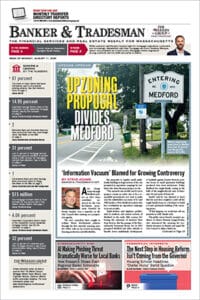
A clock stands in Everett Square. ULI Boston/New England is partnering with Everett and two other communities north of Boston to enhance both their urban mobility and their supply of new housing. iStock photo
There is at least one big truth: none of us like sitting in traffic. In community preference surveys, people often express an affinity for homes in walkable places with neighborhood amenities – and a willingness to pay more for this.
People value sidewalks and public transport. By and large, they like neighborhoods that promote social inclusion and easy access between the places they live, work, patronize and recreate, through various modes that enhance optionality. Overall, this type of connectedness builds community and increases the vitality of public places.
Now more than ever, where people live and how they get around are interwoven making them both key determinants of opportunity and quality of life for the residents of our cities.
Three Criteria for Housing
Our region rises to the top of many national and global lists, yet we increasingly find ourselves high in the rankings for cost of housing and level of traffic congestion. Recent surveys of our young people show that many plan to leave the state, and businesses indicate that it is increasingly challenging to compete for talent with other regions.
To ensure that we remain a place that people both want and can afford to be, we must address these challenges with urgency and intentionality. This demands an all-hands-on-deck approach from all who touch this work, with the knowledge that multi-layered and targeted solutions will best meet our needs.
Understanding that mobility and housing opportunity are linked, ULI Boston has launched a data-driven Mobility-Oriented Development (MOD) Initiative to increase attainable housing and quality of life in our communities. Led by our policy committee with Arrowstreet as project consultant, we identified three critical components necessary for a community to incentivize and develop new housing: mobility, opportunity and demand.
Mobility means having high-quality transit infrastructure, with multiple modes of transportation ready to support new housing.
Opportunity requires local zoning regulations and permitting processes that are supportive of multifamily housing and increased density.
Demand needs a strong existing housing market and desirable community amenities make the area both an attractive place to live and financially viable for new developments.
Using this framework, we studied 15 communities along the North Shore, using over 60 data points ranging from transit scores, housing vacancy rates, forms of government, and more. These factors provided a data-driven glimpse into a community’s readiness for adding new mobility-oriented housing relative to its peers.
Using this information in combination with on-the-ground intelligence, we extended invitations to selected communities and are pleased to work with the cities of Salem Everett, and Beverly.
ULI Offers Help
Municipal leaders from each MOD community have access to key ULI resources stacked in a customized way to further enhance their mobility and housing opportunity, including membership, a technical assistance panel centered on a mobility challenge, an UrbanPlan experiential learning workshop, and registration for ULI’s spring or fall meeting.

Catherine Rollins
Additionally, the MOD initiative provides numerous opportunities to strengthen relationships and share best practices between private and public sector members – a key piece to creating the best outcomes for our communities.
Collectively, we will grapple with a wide variety of questions to shape the built environment in our region. How can we promote the repurposing of underutilized land to unlock housing development in transit-rich areas? How can we leverage changes in land use regulations and parking policy to support the development not just of rental units, but homeownership opportunities as well? How do we move people around more easily in the near term, maximizing how people experience our vibrant places?
By targeting mobility-oriented development with intentionality, we can create conditions that maximize the efficacy of existing infrastructure while supporting sustainable growth in dynamic centers. As we mitigate the concerns that sometimes arise when new housing development is proposed with enhanced transportation modalities that create options beyond cars, we can make it easier to create new homes. This is a win not only for new residents but for the entire region.
Catherine Rollins is the director of ULI Boston/New England.





